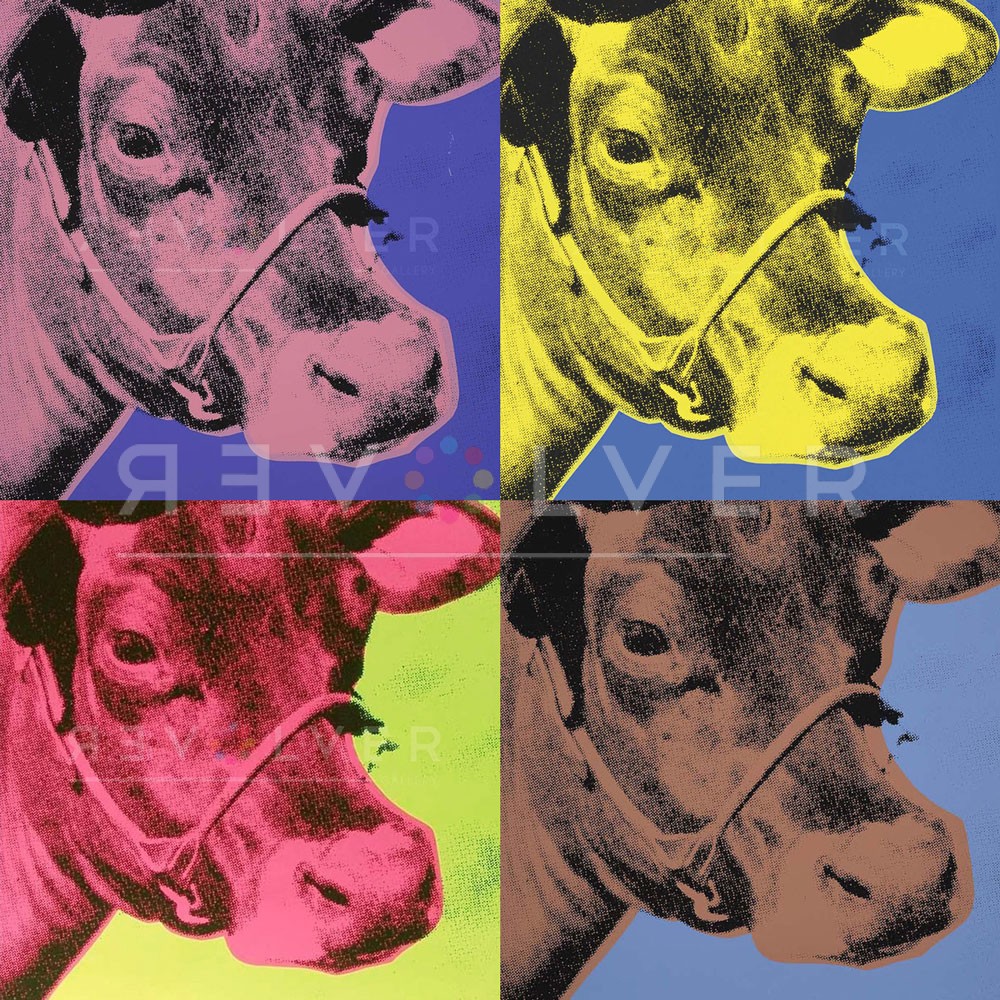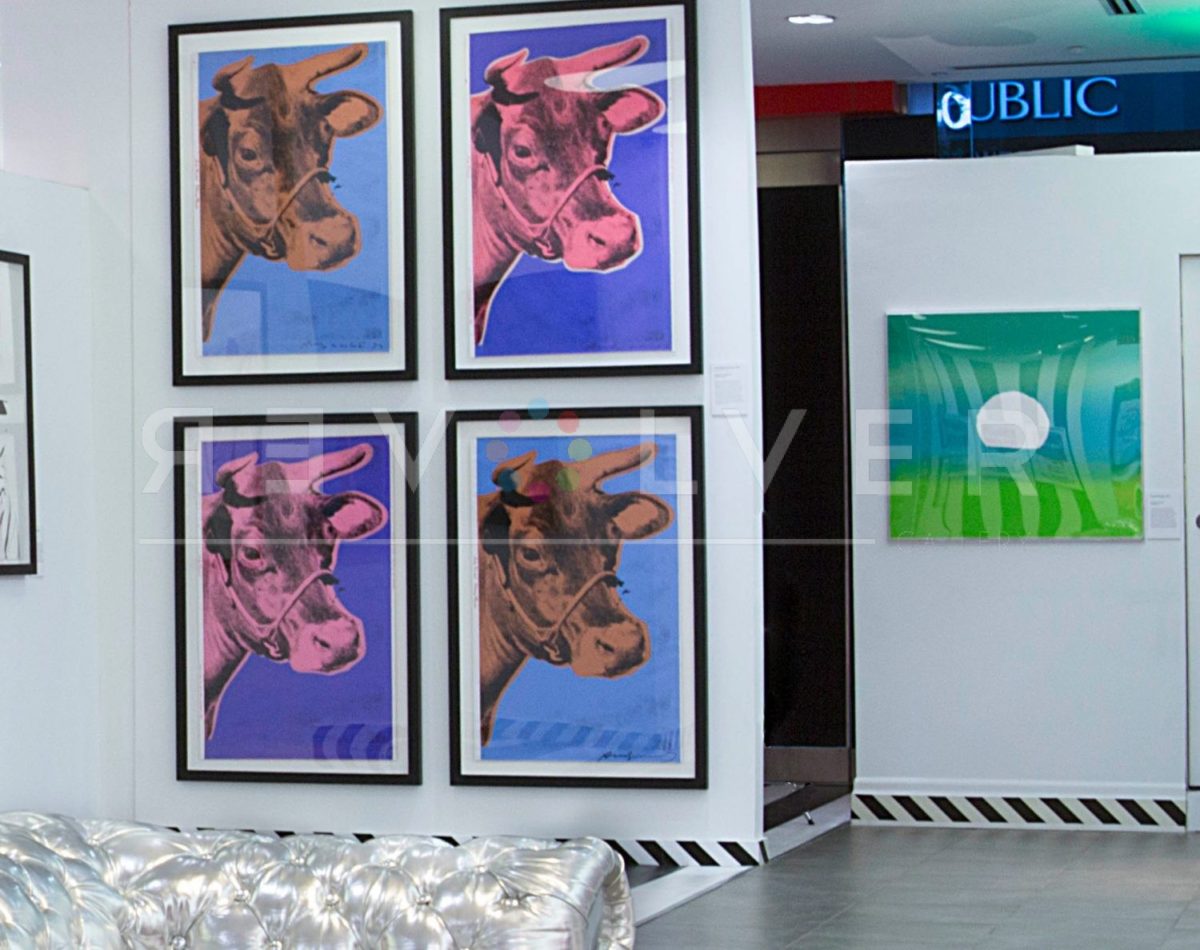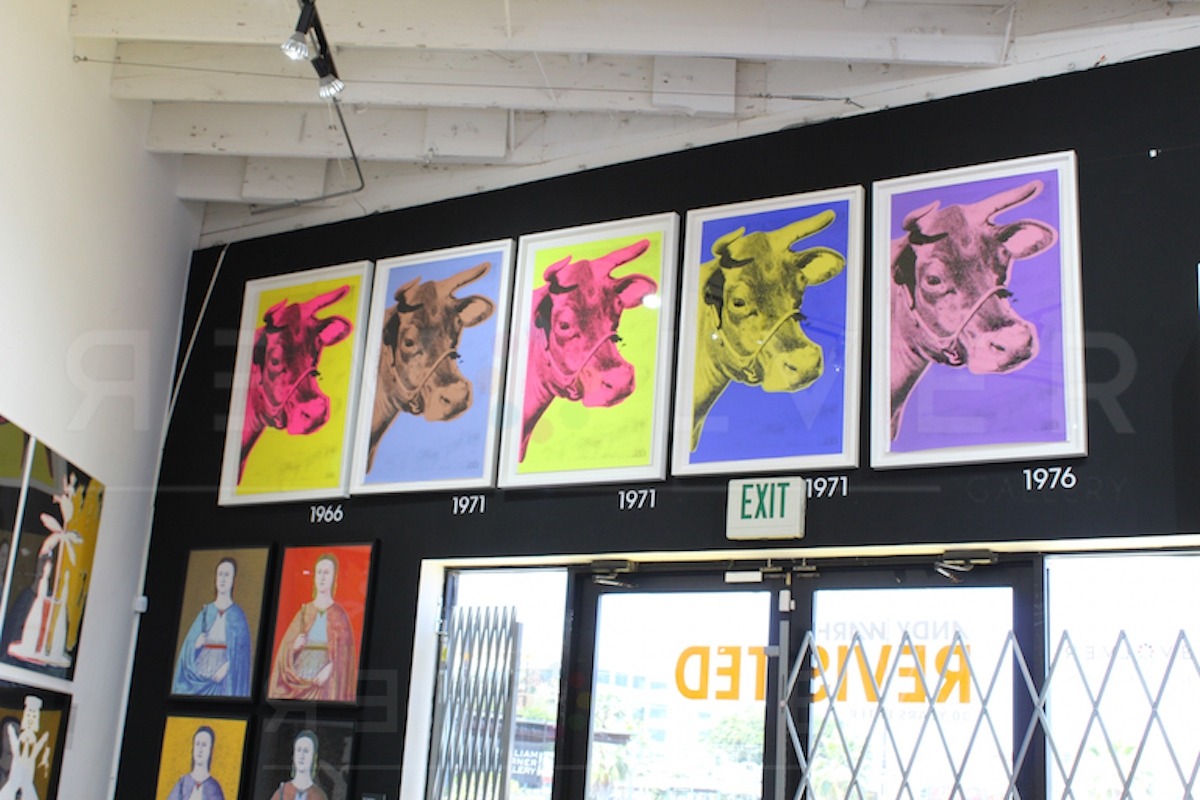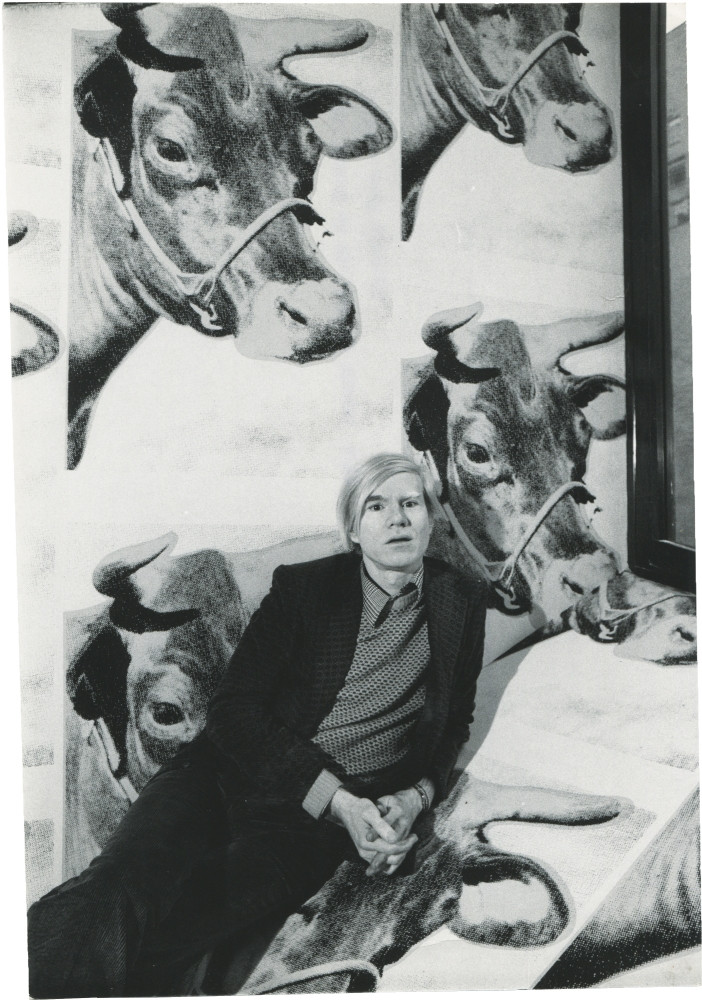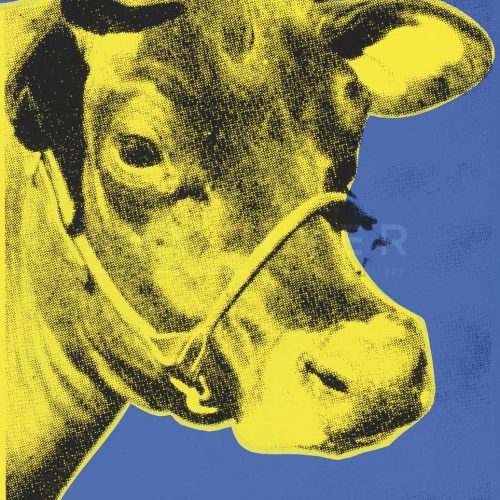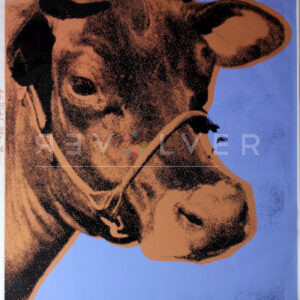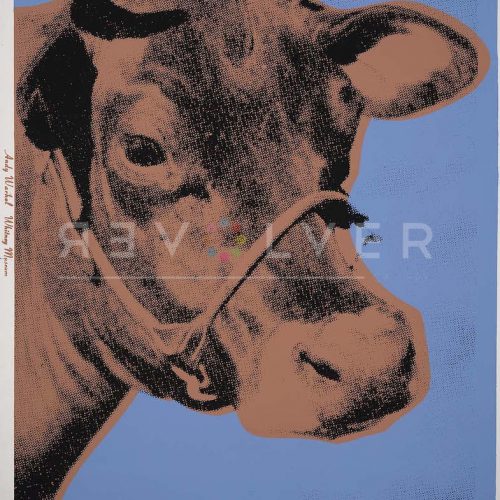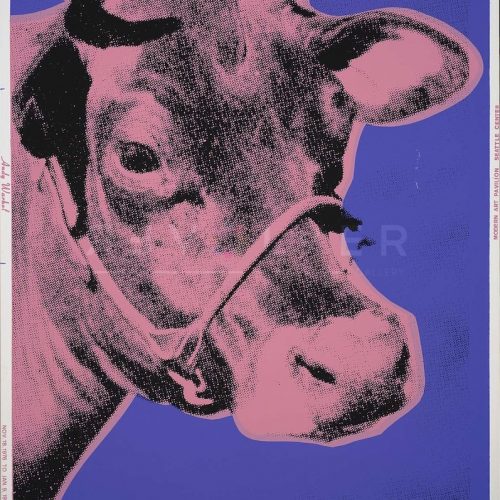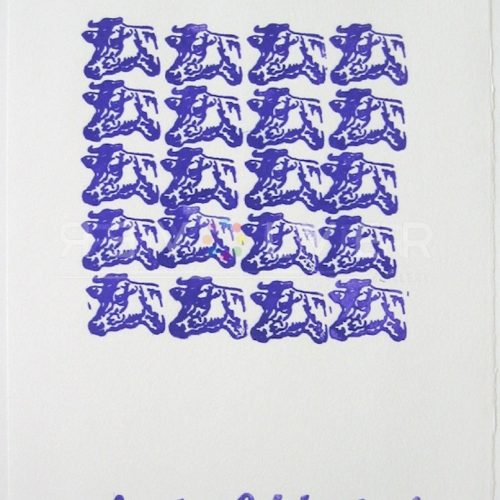Andy Warhol’s Cows prints come from a series of works produced between 1966 and 1967. A joyfully irreverent take on a classic, ancient tradition of rural art, the Cows works represent Warhol’s formal effort to introduce the production of wallpaper into his creative repertoire while experimenting with screen printing. Once again, the creative process behind Cows mimicked the assembly-line nature of modern commercialization, a huge inspiration for Warhol and his pioneering of the Pop Art movement.
Firstly, the inspiration for Andy’s Cows came from Ivan Karp, a friend of the artist and instrumental art dealer in the 1960s. Karp once said to Warhol, “Why don’t you paint some cows, they’re so wonderfully pastoral and such a durable image in the history of the arts.” Gerard Malanga, one of Warhol’s printers and collaborators, chose the photograph of the cow. But ultimately, it was what Warhol did with this image that made the final product so interesting. With bold, high-contrast colors, Warhol’s cheeky sense of humor illuminates the otherwise serene gaze of the agricultural and spiritual emblem.
Andy Warhol’s fascination with American culture and consumerism made his name as he pumped out prints of popular products and celebrities like Campbell’s Soup, Brillo Boxes, and Marilyn Monroe faster than Ford produced automobiles. Similarly, Cows takes on a common character in American life and practically turns it into an advertisement for kaleidoscopic milk. Raised in a middle-class immigrant family with a Catholic upbringing, Warhol’s take on the cow combined a large component of working-class farm life with the post-war commercialization mindset, and reproduced images of the animal for visual consumption in a similar fashion to the increasing expansion of farming for mass consumption during that period. Andy Warhol’s ability to predict pop-culture trends of the 20th century enabled him to craft a Pop Art version of a bucolic symbol, while commenting on the massive scale of production of one of the most widely consumed animals.
The Cow artworks include FS II.11, FS II.11A, FS II.12, and FS II.12A. Revolver Gallery also owns a rare colorway of the Cow print, which Warhol made during the last days of the Andy Warhol Exhibition at the Whitney Museum in 1971.
Cow as Part of Andy Warhol’s Larger Body of Work
Warhol’s Cow series was produced between 1966 and 1967. Cow 11 was the first iteration, published in 1966 for his show at the Leo Castelli Gallery in New York. The Cow artworks represented Warhol’s formal effort to introduce the production of wallpaper into his creative repertoire. The exhibit showed walls covered in wallpaper consisting of Cow 11. Every inch of wall space from floor to ceiling on each wall was covered in these portraits. The show so moved Castelli that he went to such lengths as to have professionals install the wallpaper so that the guests could see the artist’s vision perfectly. The wallpaper was used tw more times to line the walls of Warhol’s show.

